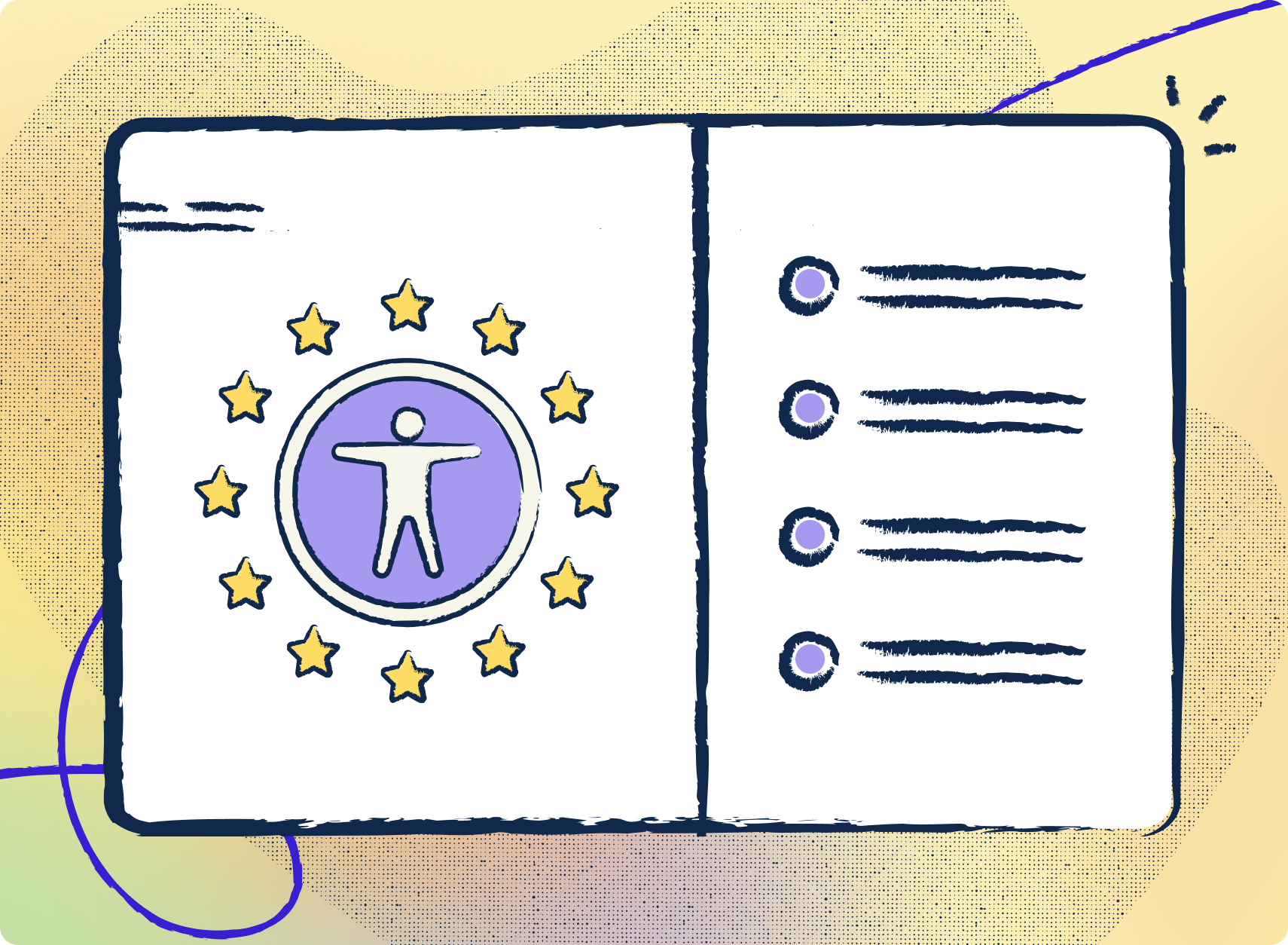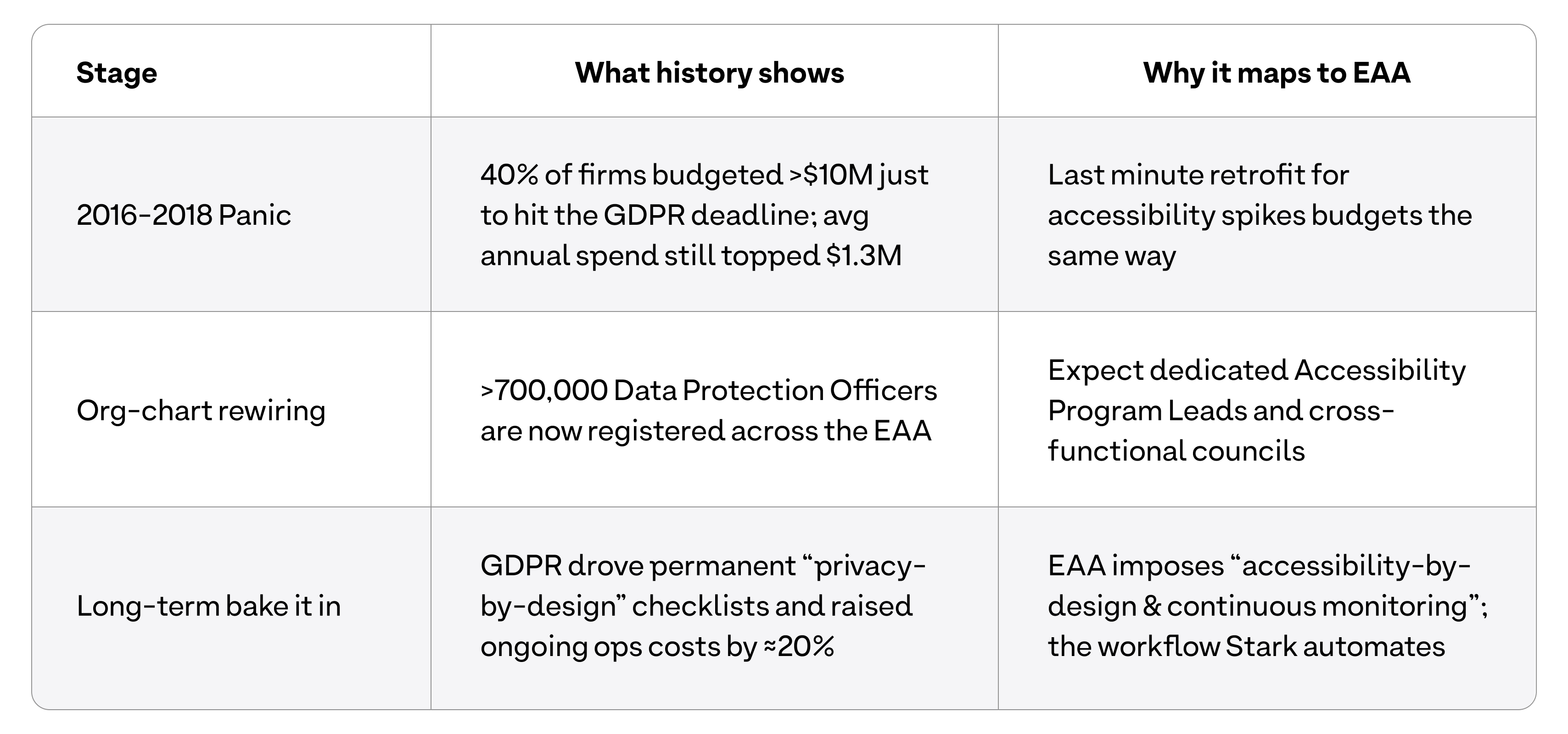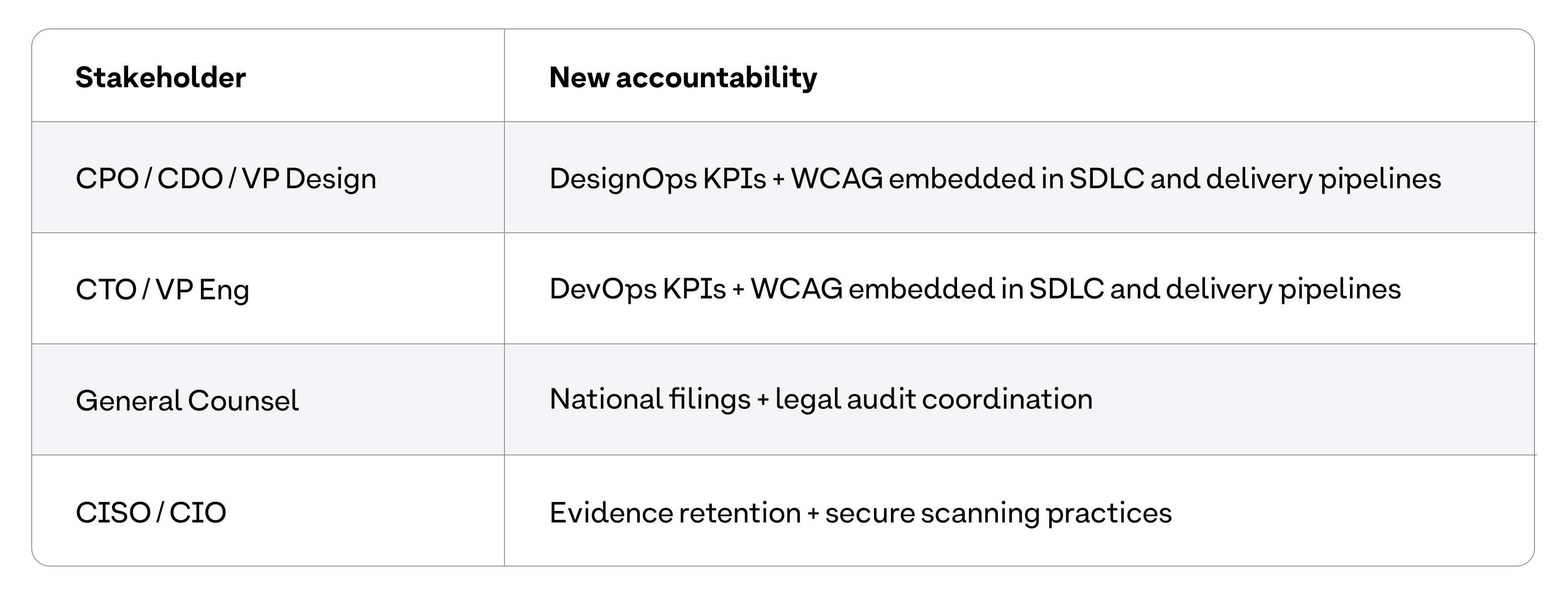GDPR Redux — Accessibility Edition: 4 things execs must nail with the EAA
As the European Accessibility Act (EAA) enters enforcement phase, companies face the same scramble they once did with GDPR. This post outlines the four key shifts every exec must understand, the real implications of EN 301 549 and EN 17161, and why treating accessibility as a governance and risk function—rather than a siloed fix—gives early movers a competitive edge.

Team Stark
Oct 21, 2025

Disclaimer: As digital accessibility is our specific wheelhouse, we’re keeping this focused on digital products and services.
Is this GDPR déjà vu for you? Us too. Remember how GDPR went from “someone else’s problem” to “€20 million headaches” almost overnight? The European Accessibility Act (EAA) is on the same path—only this time it targets the usability of every digital product and service you ship. If you serve EU users, the clock stopped on 28 June 2025. While some may want to cling to the 2030 grace period for legacy products, that notion is a trap for software teams. Why? Because every release resets the clock. Ship a new version, and it must be compliant from day one. No legacy clauses.
Below are four facts you need before the next strategy review—plus information on why Stark makes compliance a competitive asset instead of a last‑minute scramble.
GDPR Scramble → Transformation

Early investors turned privacy into a sales asset; laggards paid fines and still had to rebuild their stack. With Stark, you integrate accessibility early, operationalize it across teams, and stay audit-ready without reinventing your stack.
There’s a single market‑wide MVP for accessibility
Fragmented national rules once let companies play “whack-a-mole” with accessibility. The EAA ends that: there’s now one horizontal directive—and two complementary technical standards—governing accessibility across banking apps, ecommerce, SaaS, media, and more.
The law references EN 301 549 for product-level conformance. This nests WCAG 2.1 AA for web, mobile, and software. But at the organizational level, EN 17161 now applies requiring accessibility to be baked into business processes and governance structures.
It applies whether you’re a fintech app in Paris or a global marketplace based in NYC serving EU customers.
It’s a leadership problem, not a silo problem
Accessibility used to be a developer after‑thought until Stark shifted accessibility left to design, and then built the platform to service the entire software development lifecycle end-to-end. Under the EAA, each C‑suite seat now owns part of the compliance chain though; gaps anywhere break the whole.

Accessibility is a revenue lever, not just risk insurance
The cheapest way to fund accessibility is to make it pay for itself. Early adopters of GDPR used “privacy‑first” as a sales hook; accessibility can do the same.
-
Tender edge: EU public‑sector and many enterprise RFPs now include mandatory EAA clauses — inaccessible vendors are disqualified up‑front.
-
ESG & investor optics: Accessibility disclosures feed directly into social‑impact scores, influencing index inclusion and capital costs.
-
Market expansion: Estimates from global disability‑economics research suggest that 87 million EU consumers with disabilities control trillions in disposable income — making inclusive UX a lever to expand addressable markets.
-
Brand halo: Post‑GDPR, privacy‑champion brands are said to have out‑performed the Euro Stoxx by 13 %. While rigorous evidence for a 13 % premium is lacking, related studies show that strong security/privacy investment announcements and reputational risk avoidance can yield positive abnormal return. Early accessibility leaders can replicate that differentiation.
Advantage of using Stark
Accessibility risk management with Stark connects policy to practice through centralized governance, continuous monitoring, and seamless implementation to detect and remediate across the software lifecycle — from first design to last line of code.
-
Centralized governance via Compliance Center, including audit-ready evidence trails
-
Continuous monitoring with project-based dashboards to track progress and regress over time
-
Accessibility issue detection and remediation within design and code files
-
Auto-generated VPATs, accessibility statements, and conformance documentation
Seamless implementation across the SDLC for reduction of cost and time-to-remediation, compliance with regulation, and delivering on your promise of a quality experience for customers.
💬 Ready to track your risk posture, streamline your team’s workflow, and automate the heavy lifting? Book a quick chat and we’ll talk you through it and can show you how to squeeze the juice out of Stark.
For any thoughts and feedback at support@getstark.co, or join the conversations in our Stark Slack Community, on LinkedIn, and on Twitter.
European Commission (2020).
Report on the application of the General Data Protection Regulation (GDPR)
Published 24 June 2020.
Read full report on EUR-Lex →
Hunton Andrews Kurth (2020).
European Commission Releases First Report on Evaluation of GDPR
Summary of the 2020 findings with focus on implementation challenges.
Read article →
European Parliamentary Research Service (2024).
The General Data Protection Regulation: Second Report
Cites continued divergence in application and gaps in enforcement.
View PDF →
European Commission (2021).
Union of Equality: Strategy for the Rights of Persons with Disabilities 2021–2030
Brussels, March 3, 2021.
Read the full strategy document (PDF) →